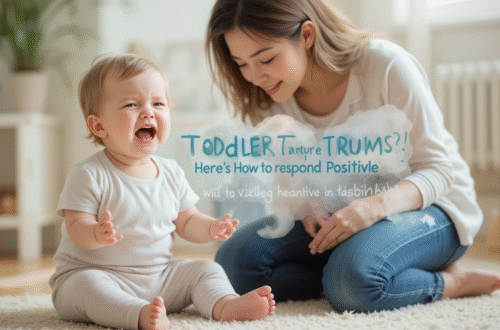Parenting is not about being perfect; it’s about being present. And in the cacophony of advice that clutters our feeds, gentle parenting is not stood behind because it is soft, but because it is strong in the most mindful of ways. It’s not about giving in. It’s about showing up with patience, empathy, and clear boundaries. If you’re a mother or father seeking more peaceful days, deeper connections, and kids who truly know they’re seen and heard, let these five rules guide your gentle parenting journey. Looking to build a stronger parenting foundation? Don’t miss these positive parenting tips for modern families that align beautifully with the gentle approach.

I remember the first full-blown tantrum my toddler threw in the aisle of a supermarket. The me of old would have wanted to respond — to get loud, to direct the course of things. But the soft parent in me stopped, bent down, and said softly, “It’s fine to feel angry. I’m here.” She didn’t stop crying at once. But she looked right at me , and that changed everything.
Moments like these: These are the moments that gentle parenting was made for. Let’s take a look at five everyday, easy-to-follow rules that can have a significant impact.
Stay Calm First—Always
Before you direct your child, regulate yourself. Gentle parenting begins with you, not your child. Babies suck our energy before they listen to our words.
How to stay calm:
Breathe deeply before you reply
Employ a grounding phrase such as: “They’re learning, not giving me a hard time.”
Take a brief break if you feel triggered.
Calm is not weakness — it’s control with kindness. When you remain calm in your comments, you are teaching your child how to manage their frustration.

Real-life reminder:
And then there was the night my 4-year-old refused to go to bed. I almost lost it. Instead, I turned down the lights, turned on easy-listening music, and quietly sat with him. In minutes, he would settle — not a word from me.
This regulation aligns well with the “noise down” (i.e., calm parenting) practices we discussed in a previous blog post.
2. Validate Feelings Before Correcting Behavior
When it does, rather than immediately correcting, acknowledge what your child is feeling. It is the bridge to cooperation.
Say things like:
“Well, you’re upset cause you wanted more screen time.”
“It’s okay to be angry. Let’s talk about it.”
“That was lame, wasn’t it?”
Validation is not agreement — it’s letting your child know you see them. And when children feel understood, they’re more willing to accept correction.

Why it matters:
Builds emotional intelligence
Shuts off shame or feeling humiliated
Encourages open communication
This is one of those secrets of good parenting that helps form a strong foundation of trust for life. You’re raising a kid whose feelings aren’t “bad”—just signals to pay attention to.
A helpful read, The Gentle Parenting Book by Sarah Ockwell-Smith delves into emotional validation in-depth, offering science-backed techniques.
3. Use Gentle But Firm Boundaries
Gentle parenting is not permissive parenting. Boundaries are important, but how you set them is essential.
Set boundaries like:
“We don’t hit. You can be mad, but we use our words.”
“It’s O.K. to be upset, but we still need to brush our teeth.”
“You can pick: Get dressed now or in 5 minutes.
Offer choices when possible and stay calm when rules are broken; then follow through with gentle consistency.
Parent tip: Visual schedules, such as this Routine Chart for Kids, make transitions easier and reduce power struggles.
Gentle boundary tips:
Be clear, not controlling
Remain neutral and firm in your tone
Provide empathy — and a limit
This also aligns with our guide on how to deal with terrible toddler tantrums in a positive way. It’s not about saying yes to everything — it’s about saying no with heart.
4. Model the Behavior You Want to See
Imitation is the way kids learn. Your behavior determines their response to a greater extent than any lecture can.
Show them how to:
Apologize when you’re wrong
Deal with frustration without shouting
Be polite even when annoyed
And when I’m able to say, “I need a moment to cool down” in a calm voice, she might echo that phrase later. That’s growth in action.

Pro tip:
Narrate your feelings: “I’m feeling sleepy, so I’ll sit down for a moment.”
Show respect to get respect
Keep promises and routines consistent
Your daily actions become their inner speech. That’s the silent force of gentle parenting.
5. Focus on Connection Over Control
Connection is the soil in which cooperation grows. Gentle parenting is about shifting the emphasis from “how can I manipulate my child?” to “how can I connect to them first?”
Ways to connect:
“Find 10 distraction-free minutes a day to do something they enjoy.”
Be at eye level and smile when you give directions
Listen more than you talk
The more connected your child is, the less they’ll act out for your attention. Connection is not a reward — it’s a daily requirement.
Little helper: Set up calming bedtime routines with this Soothing Kids’ Nightlight — it helps build trust at the end of the day.
My moment:
On a busy workday, I observed my daughter becoming increasingly irritable. I stopped, made my wife’s favorite hot chocolate, and we sat outside for about 15 minutes. That simple moment reset her — and me.
When in doubt, connect first. Correct later.
Why Gentle Parenting Works (Even When It Feels Slow)
I mean, let’s be real, gentle parenting takes patience. You don’t always catch the results in the moment. But what you’re constructing is larger than compliance. You’re raising:
Emotionally aware kids
Trust-based relationships
Lifelong communication skills
Gentle parenting doesn’t mean you never lose your cool. It means you are ready to repair. It means prioritizing long-term expansion over short-term control.
Final Thoughts: Gentle doesn’t mean easy – it means intentional.
These five rules are not about perfection. They’re a compass on the days when parenting seems a sloppy, pungent cacophony.
Stay calm
Validate feelings
Set firm boundaries
Model behavior
Prioritize connection
You’re still human. You will still have hard times. But under gentle parenting, those moments become opportunities to teach, for you and your child.
Want more calm in parenting?
Try these five rules for just one week. Take note of how your child reacts, how you feel, and what changes — even slight ones. You might be surprised.
💬 Do you have your gentle parenting strategy or mantra? Share your thoughts in the comments — we’d love to hear what’s working for you.
Just a reminder, you don’t have to have it all under control to raise great kids.
You just have to show up gently, periodically, and lovingly.





